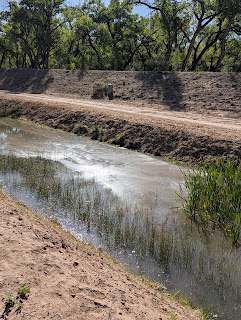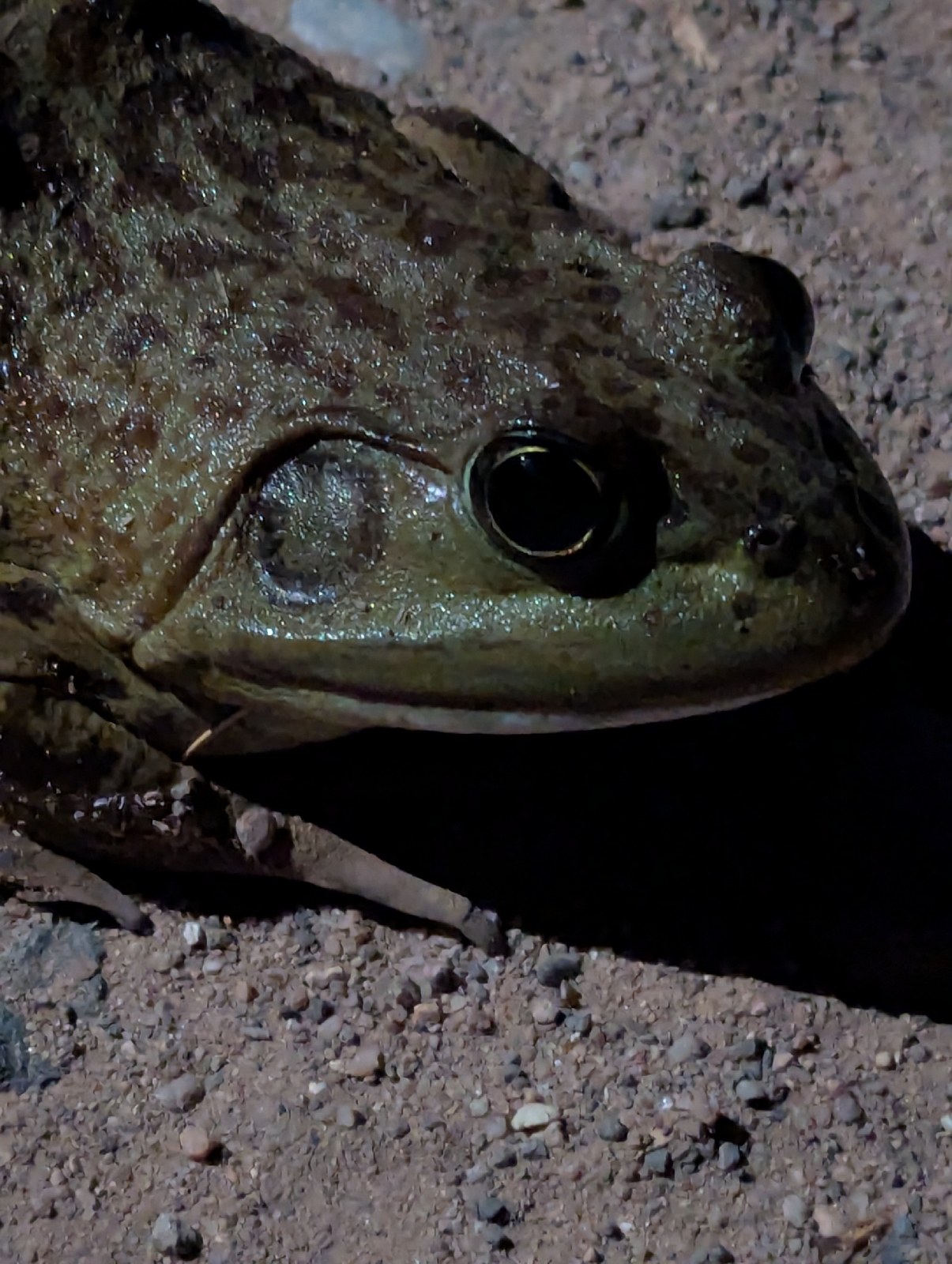Corrales continues to be a riparian habitat and the water table has recently begun to rise; either as a result of recent water releases to meet our water debt to Texas, or as a result of rains last month. It is not easy to tell. The change in water level of even a few inches has a dramatic effect on the plants and animals Corrales will see.
Nature in Corrales
Translate
Wednesday, December 17, 2025
Invaders
Tuesday, November 25, 2025
Colors
Skotogala
Colors in Corrales are amazing, and
we often see the best ones in the late fall. The orange of ripe pumpkins is
usually reflected in the last of the autumn leaves. But vibrant hues are seen
in many places if we know where to look.
New Mexico
does not usually get to see the aurora borealis, but his month we were
privileged to get quite an amazing view for one night during an intense solar
storm. Magnetic particles in the upper atmosphere interacted with nitrogen in
the lower atmosphere, releasing neon hues. On November 11-12 three solar storms
converged and gave New Mexico quite a firework display for a brief period
overnight. We also saw other visitors.
The sandhill cranes visit New Mexico every year quite predictably. They must be quite used to the auroras at the latitudes they spend their summer nights, flying as far north as Russia and northern Canada. They draw attention to each other with their bright red heads during the day, as well as their loud calls and balletic dancing.
Someone who
does pay them attention is the coyote. While these do well by being mostly
omnivores, they are not above snagging an unwary crane is the chance presents
itself. Either feathered or furred, both animals like to frequent apple
orchards and corn fields. Coyotes are very good at blending into their environment,
and few people notice they are there if they don’t want to be seen. While reviled
they are quite important to the whole ecosystem.
Leaf
litter is usually viewed negatively as well, which is weird in light of their
value to the future. It is an important resource for seedlings during the mild
winters when plants are still able to grow despite the short days and cold
nights. Seedlings such as hackberry trees benefit from the minerals and
moisture found in the deep leaf litter. Dead leaves also insulate from the
freezing air that could damage a fragile plant.
Many
insects also benefit from leaf litter. The moisture and warmth protect larva of
many insects who might otherwise not survive the winter. The larvae of a
hoverfly might spend a mild winter feeding on aphids, while the adult emerges
in the spring to be an important pollinator. Despite the fly’s bee-like
appearance, this fly is completely harmless to humans.
The
colors of the fall and winter are quite impressive, but they do not exist in a vacuum
and may even one day vanish. Sandhill cranes were once rare, as their cousin
the whooping crane is now. Coyotes thrive because their predators, mountain
lion and wolves were extirpirated. We don’t even know how many insects are
vanishing as their protective leaf litter is cleaned away. Even the heavens are
vanishing. The aurora needs dark skies to be seen, and when was the last time
most people saw the actual milky way through the lights of cities?
Wednesday, October 22, 2025
Rain
“The gentle rain, that falls unseen, Softens the earth where man has been.”
Byron
Woodpeckers, flickers and sap suckers are related birds. This is a red shafted flicker, they appear to over winter in Corrales. They feed on beetles and ants, often being found on the ground more than other birds. Their triple call sounds a lot like a Cooper's hawk territorial call, but ornithologists are not sure if this is an example of deliberate mimicry or not.






This mushroom looks more familiar, with the typical veil, marking it as an Agarcius species. Could be edible but I would never risk it. Look closely and you might see the small insects already moving in. Those are likely springtails and they have a whole ecology sprouting on this shiny white cap.
Corrales has enjoying a late Autumn rainy season that will be all too fleeting. But while it lasted, we can see a whole system of ecology around the extra moisture, from mushrooms and seedlings sprouting, to apples falling and those coyote visits. All these things should all be appreciated because they quickly will pass. They are all so fleeting and valuable.
Wednesday, June 4, 2025
Float
| Drink deep, or taste not the Pierian spring : |
| There shallow draughts intoxicate the brain, |
And drinking largely sobers us again. Alexander Pope The weather is being ideal for plant growth, cottonwood dispersal, and toad courtship. Temperatures are good, with some moisture and slight winds. This means the ecosystem is thriving now, with plants growing, attracting insects, which in turn bring birds into the Corrales trees. |
This delicate flower is called an evening primrose, but it is not related to those species. They are drought hardy and have many medicinal uses ascribed to them. It only has four, heart shaped petals which are semi-transparent.
After the rains many birds examine the lay of the land. This finch has a large beak well designed for many feeding tasks. The brief monsoons have unleashed a large number inf insects that birds spend most of the day looking for and catching. Later in the year this same bird will switch to a diet of fruits and seeds as it can find them.
The red wing blackbird relies on water and swollen acequias to provide nest cover for the female. The male uses a loud voice and a pair of flashy epaulettes to draw attention away from her and towards himself.






























































